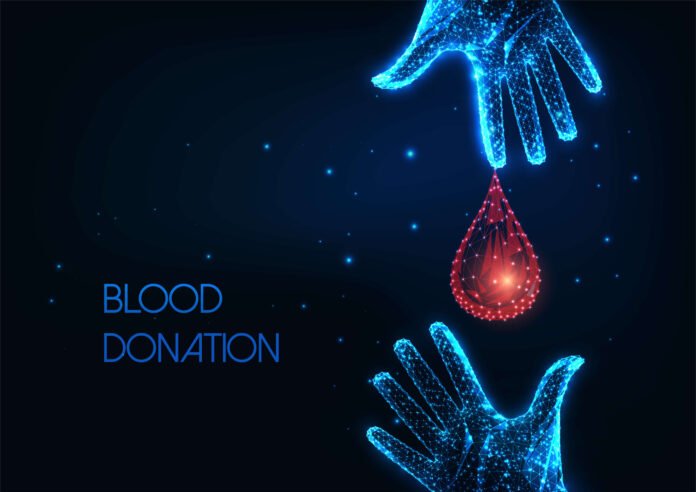The healthcare business is not immune to the pervasive impact of technology in an increasingly digital society. The possibilities are boundless, ranging from telemedicine consultations to complicated surgeries utilizing robotic arms.
One area that has seen tremendous transformation is the mechanism that connects blood donors and recipients. In this article, we’ll look at how technology is altering this industry, ensuring that life-saving blood reaches individuals in need more swiftly and effectively.
The Traditional Blood Donation Process: Challenges and Limitations
Historically, the process of blood donation and distribution has been beset with complications. Donors had to go to blood banks or donation camps, often without understanding the urgency or specific requirements at the time. Those in need of transfusions would have to rely on blood banks or hospital inventories. If no match was found, the customary frantic hunt would begin, which would involve phone calls, social media pleas, and other techniques.
While these approaches have accomplished their goal to some extent, they are fraught with inefficiencies:
Blood types that are in high demand might not always align with the available donors.
Donated Blood Expiry: Blood has a limited shelf life. A mismatch between supply and demand may result in the squandering of this important resource.
Lack of Real-Time Data: In an emergency, real-time data on blood flow is crucial, but it has not always been readily available.
Bridging the Gap
Here comes technology. As cellphones become more prevalent and online platforms proliferate, a new paradigm for connecting blood donors and recipients has emerged. Here’s how technology is altering things:
Digital Blood Banks and Platforms: In Nigeria, applications and websites such as Blood+, BDonors, and LifeBank are modernizing the linking process. Potential donors can register on these platforms, specifying their blood type and availability. Hospitals and people in need may then find and interact with prospective donors in real time.
In an emergency, for example, if a patient in Houston needed rare AB- blood, a quick search on a platform can bring up potential donors within a 10-mile radius who have indicated their readiness to donate.
Real-Time Inventory Management: Thanks to digital technology, blood banks can now track their inventory in real time. Not only does this help to reduce waste, but it also ensures that hospitals and clinics get up-to-date information on blood supplies.
Artificial Intelligence-Powered Matching: Artificial intelligence is being utilized to estimate blood demand and supply patterns. This predictive technique can help blood banks and hospitals anticipate future shortages, especially following natural disasters or large-scale accidents.
Donor Retention and Engagement: Digital platforms are also boosting the donor experience. Donors feel more connected and are more likely to donate on a regular basis when gamification, reward systems, and personalized reminders are used. The American Red Cross Blood Donor App, which allows donors to track their donation history, earn badges, and even see where their blood is being used, is proof of this.
Streamlining the Screening Procedure: Advanced algorithms and digital questionnaires are speeding up and enhancing the accuracy of the initial donor screening procedure. This saves time while also assuring that donated blood meets the highest safety standards.
Global Impact and Opportunities
The global implications of these technical advancements are immense. Mobile systems provide a significant benefit in developing countries, where infrastructure is often limited and blood shortages are widespread.
In India, for example, Facebook introduced a feature that allowed users to sign up to be blood donors. During times of scarcity or emergency, nearby hospitals or individuals may contact these registered donors. This has the potential to save a lot of lives, especially in locations where traditional blood donation and distribution methods have been questioned.
As technology progresses, opportunities for integrating other health-related services emerge. Consider a standardized platform for locating blood donors, organ donors, bone marrow matches, and even plasma donors in the event of a pandemic.
Connecting Blood Donors and Recipients Using Technology
The healthcare business is not immune to the pervasive impact of technology in an increasingly digital society. The possibilities are boundless, ranging from telemedicine consultations to complicated surgeries utilizing robotic arms.
One area that has seen tremendous transformation is the mechanism that connects blood donors and recipients. Innovative solutions, such as those provided by a donor management platform, are now vital in ensuring that life-saving blood reaches those in need with exceptional speed and efficiency.
Several more achievements are on the way, capitalizing on the immense potential and present momentum of digital platforms in the field of blood donation:
Telemedicine Integration: Including telemedicine allows potential donors to get pre-donation consultations. A doctor may remotely verify the donor’s health and eligibility, simplifying the process and ensuring that only persons who are physically capable of giving arrive at donation facilities.
Blockchain for Blood Traceability: The transparency and traceability of blockchain technology are widely established. By integrating this with blood donation, we may be able to construct a clear trail of where given blood originated and ended up. This will increase confidence and accountability in the system.
Internet of Things (IoT)-Powered Blood Storage: The Internet of Things (IoT) may be integrated into storage units, allowing blood banks to monitor characteristics like temperature and humidity in real time. This ensures that the stored blood is viable and safe for transfusion.
Virtual Reality (VR) and Augmented Reality (AR) Training: VR and AR can be used to give virtual tours of blood banks or simulated donation experiences for persons who are hesitant to donate due to fears or misunderstandings. This has the potential to alleviate fears and increase donations.
Automated Donor Input Systems: AI may be used by platforms to collect feedback from donors regarding their experience, from the registration process through consultation and post-donation care. This feedback might be immensely beneficial in continually refining and improving the donation process.
Geo-tagging and location-based notifications: Using location services, registered contributors can receive alerts when there is a need in their region. This proximity-based alert can significantly enhance reaction time in an emergency.
Wearable technology integration: Devices like smartwatches or fitness trackers can monitor registered donors’ health markers. Anomalies or health indicators that are outside the acceptable range (for example, low hemoglobin levels) may create messages with the user’s consent, advising them to postpone donation until they are in optimal condition.
Customized Donor Journeys: powerful donor journeys may be generated using powerful AI and machine learning algorithms based on past donation history, health measures, and preferences. This might include particular nutrition recommendations following donation or reminders timed to coincide with their body’s readiness for the next donation.
In the Future, a Comprehensive Donation Ecosystem
With these extra factors, it is clear that technology has the potential to create an entire ecosystem around blood donations, encompassing not only the act of giving but the entire journey.
The future of blood donation is about creating an environment in which giving becomes a regular, safe, and enjoyable act, from AR/VR awareness and education to real-time monitoring via IoT and AI to personalized donor journeys. The symbiotic relationship between technology and healthcare thrives, offering healthier lives and stronger communities in this industry.
Closing Thoughts
In the grand tale of technology reshaping our futures, the digital link between blood donors and recipients stands out as a light of hope and efficiency. It displays the power of innovation by modernizing a centuries-old tradition.
The path ahead seems promising. As more actors in the health business recognize the possibilities of these digital platforms and technology progresses, we may be able to envision a world where no one must suffer from a shortage of blood. In this digital age, the ancient adage takes on new significance: technology, in the right hands, has the potential to save lives.





